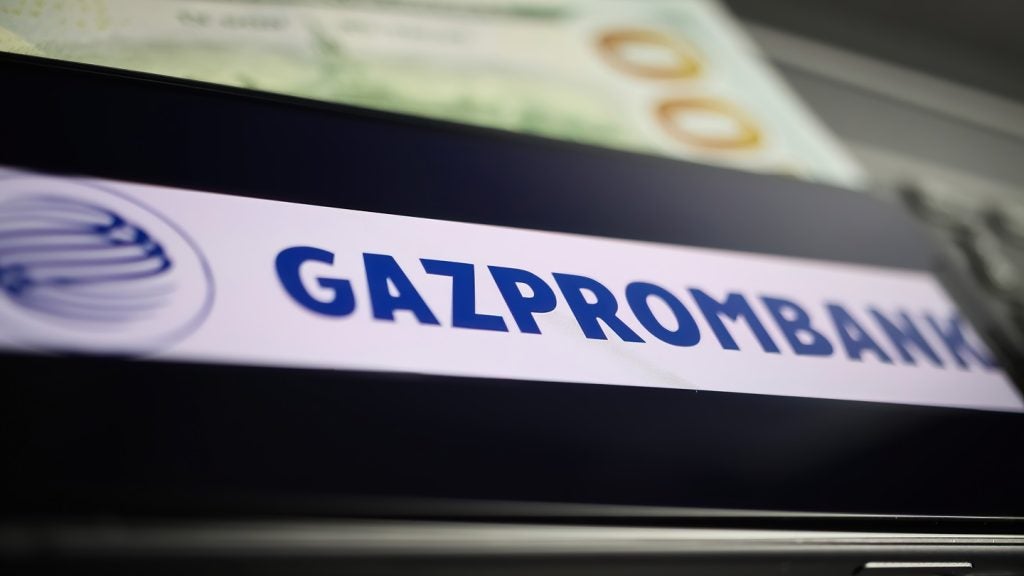Dan
Jones talks to Adrian Aguirre, head of retail products at
BBVA Bancomer, Mexico’s largest retail bank. It reported a strong
set of results for 2008, with net profit rising to €1.93 billion –
equivalent to almost 31 percent of BBVA’s total profit. Underbanked
segments and rich expatriates are two target groups for 2009.
BBVA Bancomer, the Mexican unit of Spain’s BBVA, is
looking to build on an impressive performance in 2008 by targeting
either end of the Mexican retail market – unbanked Mexicans and
wealthy foreigners eager to retire to the country. Bancomer will
target the latter segment through closer collaboration with
Compass, BBVA’s US subsidiary, according to Adrian Aguirre, head of
retail products at Bancomer.
BBVA Bancomer reported a strong set of results
for 2008, with net profit rising to €1.93 billion ($2.46 billion),
a 12.1 percent increase at constant exchange rates and equivalent
to almost 34 percent of BBVA’s total profit.
Bancomer, the largest bank in Mexico, saw
strong growth across all retail banking sectors: current and
savings accounts grew 10.3 percent over the year to €14.4 billion,
while total loans to customers rose by 13.6 percent to €26.5
billion.
|
Earnings |
||
|
BBVA Bancomer – results, How well do you really know your competitors?Access the most comprehensive Company Profiles on the market, powered by GlobalData. Save hours of research. Gain competitive edge. 
Company Profile – free
sample
Thank you!Your download email will arrive shortly Not ready to buy yet? Download a free sampleWe are confident about the unique quality of our Company Profiles. However, we want you to make the most beneficial decision for your business, so we offer a free sample that you can download by submitting the below form By GlobalData |
||
|
2008 |
% change vs 2007 |
|
|
Total customer deposits ($bn) |
18.25 |
10.3 |
|
Home lending ($bn) |
10.2 |
20.8* |
|
Net interest |
4.69 |
13.5 |
|
Net profit ($bn) |
2.46 |
12.1 |
|
Deposit |
31.30% |
|
|
Non-performing loans |
3.21% |
|
|
*Excluding back book Source: BBVA |
||
Reaching for new markets
The emphasis for 2009 is on leveraging Mexico’s retailers to
reach the unbanked section of the market, which Aguirre puts at
around 30 million people. Bancomer is looking to partner with these
retailers, known as corresponsales, and utilise their
geographically-diverse store networks to serve low-income
consumers.
Under Mexican law, these customers are able to
make deposits or withdraw money at retail outlets partnered by
Bancomer, though signing up for new products through such stores is
not permissible.
Aguirre told RBI: “We’re trying to
build a huge net of corresponsales in order to bank more people.
This segment is of interest to the whole industry because it’s the
largest and newest one in the market.”
The competition is especially intense because
of the sense that the industry has, to an extent, reached an
endgame in terms of its proposition to existing customers.
“We have all been fighting for the same
segment; it’s had enough business proposals from banks and has
largely been captured. The new market is the unbanked population,”
Aguirre explains.
Bancomer is also developing credit and debit
products as part of its push into the segment, and believes its
strengths in the payroll banking sector will also help it bank more
low-income Mexicans. At some factories, for example, Bancomer’s
payroll services utilise prepaid cards rather than full deposit
accounts.
Aguirre believes that payroll accounts, of
which the bank had 6.8 million as at 31 December 2008, represent a
key profit channel for Bancomer.
“We are pushing hard with payroll acquisition.
We are the leading bank in payroll processing; it’s a very good way
to bank people,” he said.
But the focus is not simply on account
opening: the segment also underpins Bancomer’s cross-selling
strategy. The bank’s cross-sell ratio currently stands at 3.6
products per customer, predominately focused on a combination of
deposit accounts, credit cards, mortgages and insurance.
“In cross-selling, we are focusing on the
payroll segment,” confirmed Aguirre. “They are preferred clients
for us because we know how much money they make and how they get
their deposits. It is not risk free but we like to lend to people
that we know have been paid by the payroll system through our
bank.”
One possible headwind in this regard is the
recent introduction of new regulations from the Bank of Mexico, the
country’s central bank, allowing employees rather than employers to
choose their payroll bank.
“In previous years the company decided who
would be receiving the payroll. But now we are fighting with the
market to retain and increase our payroll base, and doing so by
negotiating not with companies but directly with employees,”
Aguirre said.
Effects of the downturn
Not all employees are still in a position to
be negotiated with, however. Mexico’s maquiladoras, the factories
close to the northern border that are major employers of the local
populace, have been hit hard by the drying up of demand from the
US. Aguirre admitted that Bancomer has been affected by
redundancies at the factories, but said the bank has “kept its eyes
wide open”, noting the six month job insurance policies tied to all
of its products.
Bancomer is also rolling out a payment
restructure programme and has advertised heavily on Mexican
television to alert customers to the benefits of maintaining loan
payments.
“We are lowering payments on a staggered
basis… interest rates will be lowered every six months for those
who have kept up with payments during that time,” said Aguirre.
The campaign is in keeping with the bank’s
attempts to “approach the customer before they approach us”,
centred around Bancomer’s back-office customer monitoring
processes. That policy, coupled with a prudent approach to risk,
appears to be serving the bank well in its quest to stem the tide
of rising loan losses.
Though Bancomer’s non-performing assets ratio
jumped to 3.21 percent in December 2008 from 2.15 percent a year
previous, the bank said this ratio was 30 basis points lower than
its nearest competitor.
A step above its rivals
 Other banks in
Other banks in
Mexico have not been as successful: HSBC, for example, had an
overall non-performing loan ratio of 5.5 percent as of 31 October
2008.
“HSBC has been very aggressive, but they have
backed up a little and are setting their prices more according to
the market now,” said Aguirre, referring to a credit card cashback
scheme run by the UK-headquartered bank.
Bancomer is also looking to take advantage of
a perceived scaling back of HSBC’s small business programme. In a
measure likely to go down well both economically and politically,
it has launched a dedicated SME unit to serve this purpose.
HSBC is far from pulling out of Mexico
entirely, having announced in December 2008 that it was to open
over 100 new branches and relaunch 200 of the outlets it acquired
in 2002 when it purchased Grupo Financiero Bital, Mexico’s
fourth-largest bank (see RBI 605).
The fate of other rivals is less certain, with
rumours continuing to circulate that Citigroup will be forced to
dispose of its Mexican unit, Banamex, in order to raise cash.
Citi, for its part, has said Banamex remains
an integral part of its plans, but expansion seems unlikely given
the US bank’s ongoing cost-cutting exercises.
Bancomer’s own distribution strategy for 2009
will take on a different form, though it too will seek to relaunch
or revamp underperforming branches.
“Maybe we’re not opening as many branches this
year as a regular year, but we have the biggest branch network
which is constantly evolving,” said Aguirre.
Distribution expansion will instead be focused
on direct banking, an increasingly important segment in a country
that has 50 million mobile phones in current use, according to
Aguirre.
Bancomer has signed up to Nipper, a mobile
payments service allowing customers to check account balances and
make payments to merchants via their phones. As of September 2008,
12 Mexican banks were using the service, including Banamex and
Santander Mexico.
Bancomer is also developing its own m-banking
services, which will ultimately provide a broader range of banking
operations such as inter-account money transfer.
The bank still needs to build critical mass
for both of its m-banking projects to fully flourish, said Aguirre.
In terms of online banking, however, Bancomer is “by far the
biggest in Mexico”, with 1.2 million registered users of its
internet service.
Focusing on the future
As with retail banks the world over, deposits
are becoming an increasingly integral part of Bancomer’s plans as
it looks to boost its sources of low-cost funding.
The bank’s main deposit product is El
Libreton, a rewards-based savings account which gives savers the
chance to win prizes such as cars, televisions and white goods via
regular lotteries.
The success of the giveaways has led to them
being ported to BBVA Bancomer USA, which held its first lottery in
San Fernando, California on 24 January.
For Aguirre, these offers are even more
attractive in the current low interest rate environment, where few
banks are likely to entice customers by promising high rates of
return.
The prize-based strategy has found a natural
adjunct in the Winner Card, Bancomer’s child-focused savings card.
Launched in April 2007, the fee-free card has no minimum balance
requirements and offers children the chance to win prizes such as
stereo systems and amusement park trips.
Bancomer has more ambitious targets in its
sights too. It is also focusing on the affluent US or European
émigré, an increasingly important demographic in Mexican society,
and is keen to expand upon existing collaborations with Compass
Bank, BBVA’s wholly owned US subsidiary, in order to achieve this
goal.
The strategy for this segment focuses on
staffing relevant branches with English speakers – an elementary
approach but one it claims has not previously been offered by
Mexican banks.
Cross-border mortgages can be denominated in
pesos and delivered by Bancomer in Mexico, or can be paid for in
the US through a line of credit delivered via Compass.
Bancomer now has five branches and around 40
service outlets dedicated to serving the immigrant segment,
typically comprised of retirees.
“Essentially we develop some products for them
which are very simple because what they need is some basic money
and operations. But the big deal is that it is the first time these
are offered in English, so we gain their trust,” said Aguirre.
The bank expects strong double-digit growth in
cross-border mortgages in 2009 despite the wealth squeeze
materialising across the US and Europe.
“We have a huge set of plans with Compass.
They are now stabilising their operations because they’ve been
through a huge merger, but I’m sure they will end up working with
us a lot because we would like to raise the bar for cross-border
financial transactions as much as is possible,” said
Aguirre.
|
Metrics |
|
|
BBVA Bancomer – business |
|
|
Retail customers (m) |
15.8 |
|
Branches |
1,900 |
|
ATMs |
5,844 |
|
POS terminals |
129,550 |
|
Online banking users (m) |
1.2 |
|
Cross-sell ratio |
3.6 |
|
Source: BBVA Bancomer |
|







